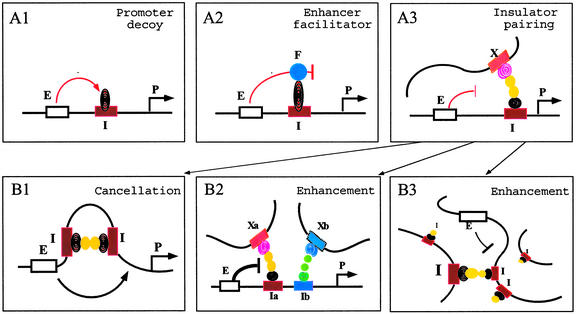Figure 4.
(A) Models for insulator mechanism. A single intervening insulator between an enhancer and a promoter may block the enhancer by interacting with enhancer-binding proteins as proposed in promoter decoy model (A1), with enhancer facilitator proteins as proposed by enhancer-facilitator model (A2), or with insulators/nuclear sites as proposed by the insulator-pairing model (A3). (B) Selective insulator interaction determines outcome of insulator pairing. According to the insulator-paring model, the block of the distal enhancer may be (i) abolished when two tandem insulators interact with each other, neutralizing their ability to interact with the external sites (B1), or (ii) enhanced when the two neighboring insulators interact independently with the external sites. An insulator may select one among multiple available sites depending on insulator type (B2), or insulator strength, which would preclude interactions between neighboring insulators of even same type in the presence of a stronger competitor (B3). E, enhancers; P, promoters; F, facilitators; I, Ia; Ib, insulators; X, Xa, and Xb, external sites with which insulators interact.

